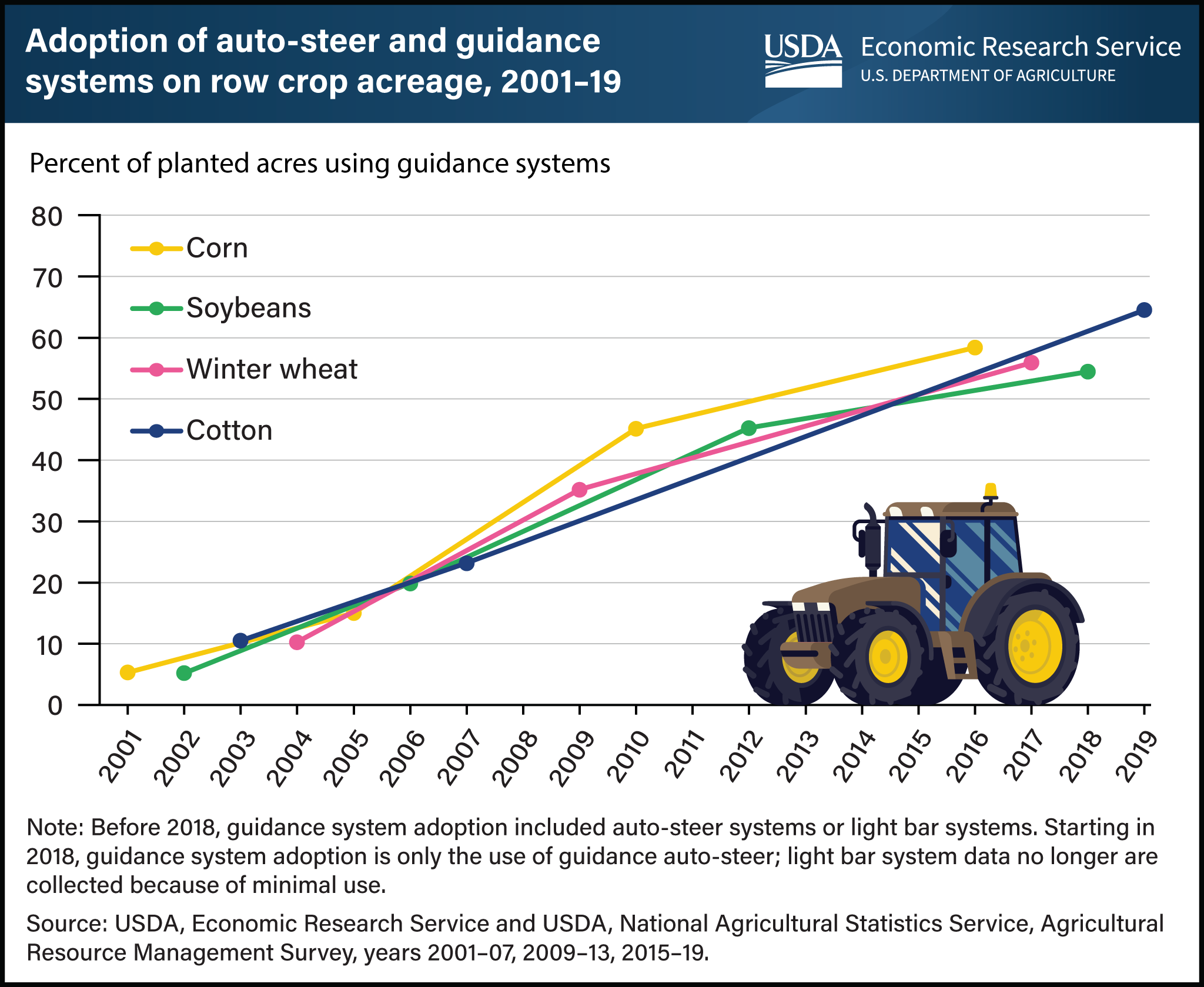Most row crop acreage is now managed using auto-steer and guidance systems
- by Jonathan McFadden and Eric Njuki
- 3/27/2023

Auto-steer and guidance system adoption on U.S farms increased sharply in the past 20 years, with use on more than 50 percent of the acreage planted to corn, soybeans, winter wheat, and cotton as of 2019, the most recent year for which data are available. Adoption rates were 58.4 percent of acres planted to corn in 2016, 55.9 percent of winter wheat acres in 2017, 54.5 percent of soybean acres in 2018, and 64.5 percent of cotton acres in 2019. USDA, Economic Research Service researchers examined producer responses from various Agricultural Resource Management Surveys (ARMS) to better understand how auto-steer and guidance systems use has evolved. Using GPS, these technologies visualize and track the position of tractors, harvesters, and sprayers in the field in real time. Autonomous steering permits automatically guided fertilizing, harvesting, and other tasks in the field with minimal involvement from the farmer, increasing field efficiency (i.e., fewer errors), reducing operator fatigue, and freeing up operator time in the equipment’s cab. This chart is based on information in the Economic Information Bulletin, Precision Agriculture in the Digital Era: Recent Adoption on U.S. Farms, published in February 2023.

